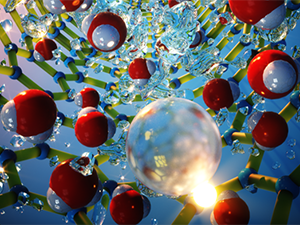Ion Solvation and Transport in Narrow Carbon Nanotubes: Effects of Polarizability, Cation−π Interaction, and Confinement
 J. Chem. Theory Comput. 2021, 17, 3, 1596–1605
J. Chem. Theory Comput. 2021, 17, 3, 1596–1605
Fikret Aydin, Alireza Moradzadeh, Camille L. Bilodeau, Edmond Y. Lau, Eric Schwegler, Narayana R. Aluru, and Tuan Anh Pham
The abstract reads as follows: Understanding ion solvation and transport under confinement is critical for a wide range of emerging technologies, including water desalination and energy storage. While molecular dynamics (MD) simulations have been widely used to study the behavior of confined ions, considerable deviations between simulation results depending on the specific treatment of intermolecular interactions remain. In the following, we present a systematic investigation of the structure and dynamics of two representative solutions, that is, KCl and LiCl, confined in narrow carbon nanotubes (CNTs) with a diameter of 1.1 and 1.5 nm, using a combination of first-principles and classical MD simulations. Our simulations show that the inclusion of both polarization and cation−π interactions is essential for the description of ion solvation under confinement, particularly for large ions with weak hydration energies. Beyond the variation in ion solvation, we find that cation−π interactions can significantly influence the transport properties of ions in CNTs, particularly for KCl, where our simulations point to a strong correlation between ion dehydration and diffusion. Our study highlights the complex interplay between nanoconfinement and specific intermolecular interactions that strongly control the solvation and transport properties of ions.
This work was supported as part of the Center for Enhanced Nanofluidic Transport (CENT), an Energy Frontier Research Center funded by the U.S. Department of Energy, Office of Science, Basic Energy Sciences under Award # DESC0019112.
https://pubs.acs.org/doi/10.1021/acs.jctc.0c00827
